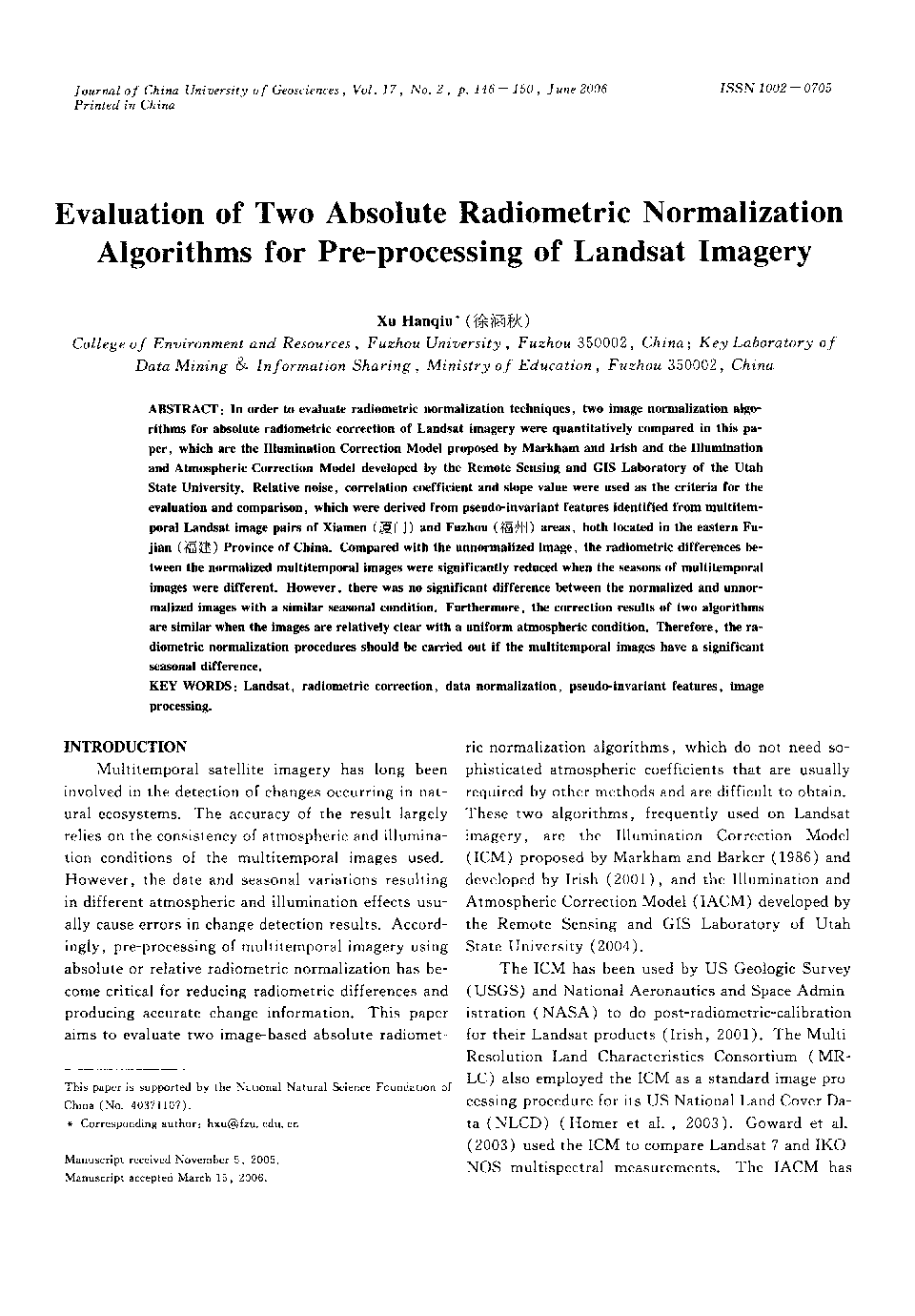| Article ID | Journal | Published Year | Pages | File Type |
|---|---|---|---|---|
| 4687875 | Journal of China University of Geosciences | 2006 | 6 Pages |
Abstract
In order to evaluate radiometric normalization techniques, two image normalization algorithms for absolute radiometric correction of Landsat imagery were quantitatively compared in this paper, which are the Illumination Correction Model proposed by Markham and Irish and the Illumination and Atmospheric Correction Model developed by the Remote Sensing and GIS Laboratory of the Utah State University. Relative noise, correlation coefficient and slope value were used as the criteria for the evaluation and comparison, which were derived from pseudo-invariant features identified from multitemporal Landsat image pairs of Xiamen () and Fuzhou () areas, both located in the eastern Fujian () Province of China. Compared with the unnormalized image, the radiometric differences between the normalized multitemporal images were significantly reduced when the seasons of multitemporal images were different. However, there was no significant difference between the normalized and unnormalized images with a similar seasonal condition. Furthermore, the correction results of two algorithms are similar when the images are relatively clear with a uniform atmospheric condition. Therefore, the radiometric normalization procedures should be carried out if the multitemporal images have a significant seasonal difference.
Related Topics
Physical Sciences and Engineering
Earth and Planetary Sciences
Earth-Surface Processes
Authors
Xu Hanqiu,
